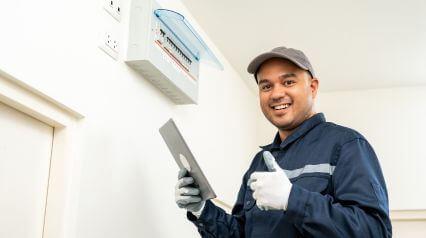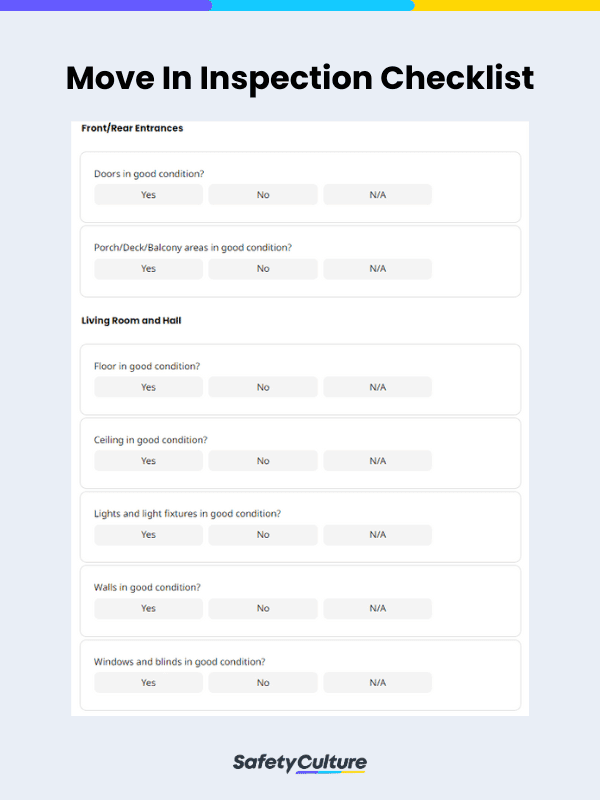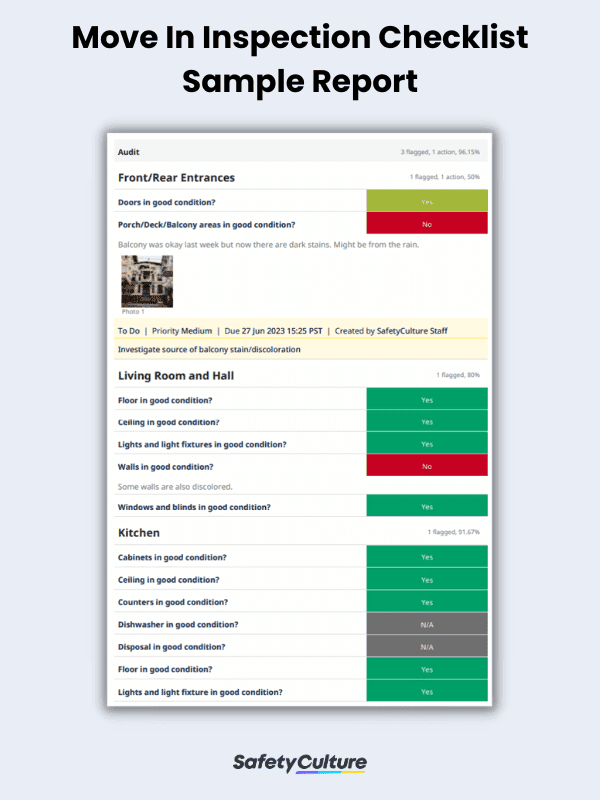What is a Move In Inspection Checklist?
A move in inspection checklist is a document used to ensure that a certain property is ready to be occupied by its new tenant or owner. It is most commonly used for houses, apartments, and commercial buildings.
Importance
A move in inspection is essential to conduct before a property is turned over and occupied. Its main importance and purpose is to ensure the following:
- The protection of the interests of both landlord and tenant, as agreed upon
- No dispute or complaints will arise from either landlord or tenant
- A smooth transition and turnover of the property
Using a move in inspection checklist is also a great way to ensure a property and its new owners or tenants are ready for move in. By using a checklist dedicated for move ins, all parties are involved and aware of any possible damages, extra or lessened costs, and other requirements that need to be discussed or settled.
How to Conduct a Move In Inspection
A move in inspection is done either before or after contracts are signed, depending on what is agreed upon by all parties. However, all move in inspections are done in the same way, usually following these 6 steps:
- Conduct an inspection of the property’s exterior such as its outside walls, roofs, doors, windows, gardens, and its nearby walkways or passages.
- Inspect the property’s interior, such as inside walls, ceilings, tilings, floorings, and the like.
- Ensure all electrical wiring, plumbing fixtures, and appliances are working properly or as promised.
- Inspect all furniture included in the property to be sold or leased, if applicable.
- Write down findings in a document to properly record and discuss them as needed.
- Communicate with the appropriate parties involves about the findings of the inspection.
What to Include in a Move In Inspection Checklist
A typical move in inspection checklist will contain fields for the following:
- Date conducted
- Findings from inspecting doors
- Findings from inspecting living rooms and other common areas
- Findings from kitchen spaces and other food-related areas
- Findings from each bedroom, depending on the size and type of property
- Findings from each bathroom available
- Findings from different systems installed, depending on the property
- Additional observations or comments related to findings
- Process of property transferring and the related deposits
- Date lease of sale signed
Although the steps of a move in inspection may seem short, there are many things to take into consideration and inspect. For this reason, it would be best to utilize a digital checklist that you can take with you anytime and anywhere, and modify accordingly to your needs. With a digital checklist, you can affix signatures, add media files and notes, and save your files to the cloud, easily accessible.
Using a digital solution to create and manage a move in inspection also helps with documentation. With all your files in the cloud, you can easily refer to them anytime, and share them as necessary for different legal and business purposes.
Here is a sample digital move in inspection checklist for reference:
Common Issues to Look Out For
Some of the most common issues that a move in inspection checklist can help with include the following:
- Structural damages to the interior and exterior of the property
- Plumbing, heating, and electrical issues
- Pest infestations
- Pre-existing cosmetic damages
It is important to document these issues as they can affect possible move in dates, security deposits, and overall transactions. As much as possible, include photos and videos about these issues as you see them and include them in your move in checklists, so that all involved parties will see the evidence.
FAQs about Move In Inspection Checklists
Ideally, both tenants and landlords should have a move in inspection checklist ready on-hand at all times. It is essential that both parties are aware of any damages, costs, and legal concerns, and that they each do their own inspection of the property so that they are on the same page.
Different properties with different uses have different needs, thus making some move in inspection checklists different from each other. While there will be common aspects across all move in inspection checklists, there will also be differences depending on the property.
There is no set standard for how long move in inspection checklist should be kept. However, best practice would be to keep it for at least a week or a month so it can be checked again. For landlords renting out their properties, it would be best to keep the checklist until the tenant moves out.




